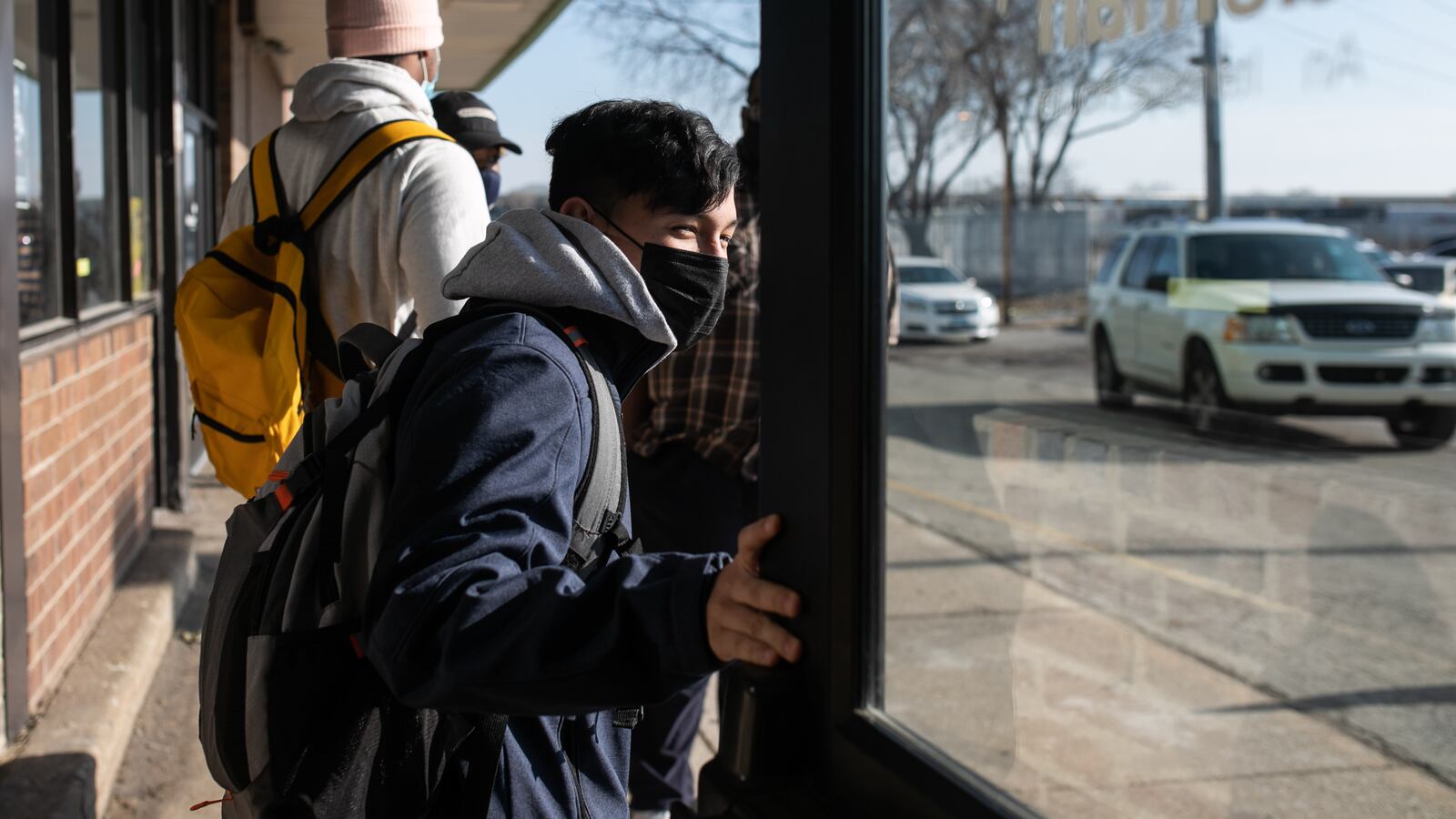It didn’t take long for Edwin Panduro, a sophomore at Air Force Academy High School on the South Side, to completely tune out his teachers while taking courses remotely during the pandemic last year.
Home alone with two younger brothers, he kept his own laptop on mute with the camera off, often paying more attention to their schoolwork than his own. By midyear, Panduro stopped logging on. By spring, he knew his odds of graduating on time or even making it through high school were shrinking.
This fall, Panduro looked for a school where he could start fresh. He landed at the South campus of Ombudsman, a national operator of alternative high schools, tucked in a strip mall in the Chicago Lawn neighborhood.
Long seen as second-chance campuses for students often derailed by homelessness, teen parenthood, trauma, or involvement in the criminal justice system, Chicago’s network of alternative schools attracted some teens such as Panduro during the pandemic. But overall, the number of new arrivals on alternative campuses fell — in part because of a quiet district push to rein in the number of students transferring out of its traditional schools.
That push is part of a broader effort to rethink the district’s tenuous relationship with its alternative schools — a partnership with the University of Chicago’s Education Lab that has tried to strike a balance between strengthening alternative campuses and right-sizing them after years of rapid growth.
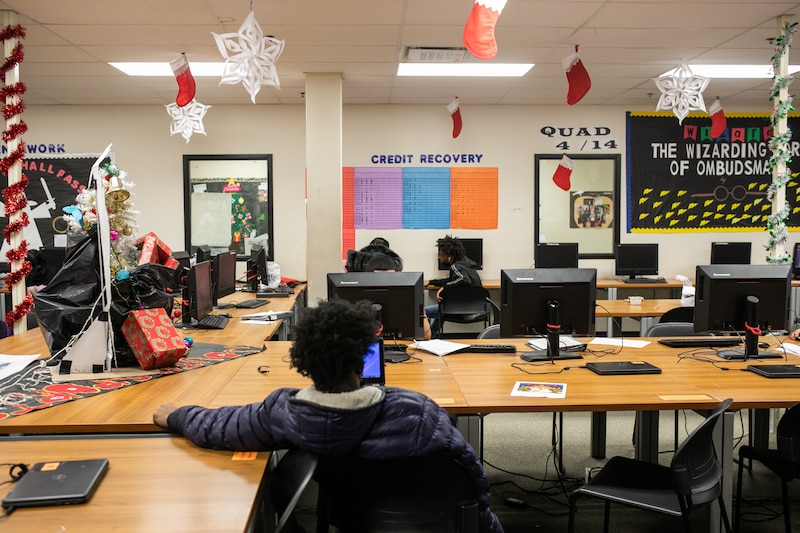
The district piloted new academic and mental health interventions on these campuses, some of which have come under fire for offering pared-down curriculums and sparse support services. But at the same time, it took steps to keep more struggling students in neighborhood campuses, which coupled with the pandemic dealt a major blow to some alternative schools’ enrollment. Transfers to what the district calls options schools plummeted to about 1,200 students last year, less than a third of their pre-pandemic rate.
District leaders acknowledge some Chicago high schools have sent too many of their students to alternative campuses, exacting a steep “transfer penalty” that cuts teens’ odds of graduating. Alternative providers, in turn, argue principals at traditional schools are under too much pressure to hold on to students who need a more flexible setting. They say a bid to shore up enrollment and budgets at struggling South and West high schools could doom many alternative campuses, which serve some students who would not graduate otherwise.
The changes come at a precarious time, when the pandemic and an increase in violence have placed struggling students at an even greater risk of not finishing school. The overhaul is a critical test of whether the district can do right by about 6,800 students in 39 alternative programs. And, although they make up only a small fraction of CPS’ 330,000 students, they are among the city’s most vulnerable youth and are much more likely than their peers to be Black and male, and to have a disability.
It’s too soon to say whether the effort will help students or cause some to fall through the cracks. But alternative schools are getting renewed attention. This past August, district leaders and Mayor Lori Lightfoot held the customary start-of-the-school-year press conference at Panduro’s Ombudsman campus — the first time an alternative school has hosted the event.
Earlier that summer, Maurice Swinney, the interim chief education officer, stressed the importance of doing more for teens in the district’s alternative schools.
“I truly believe that supporting options students is the single biggest equity issue facing our district and our city,” he said.
‘Forgotten students’
Panduro headed to Ombudsman determined to get his high school career back on track.
The goal seemed daunting. Already struggling with the high school transition when COVID shuttered school buildings, he sat out the final stretch of his freshman year, assuming that teachers would pass him regardless.
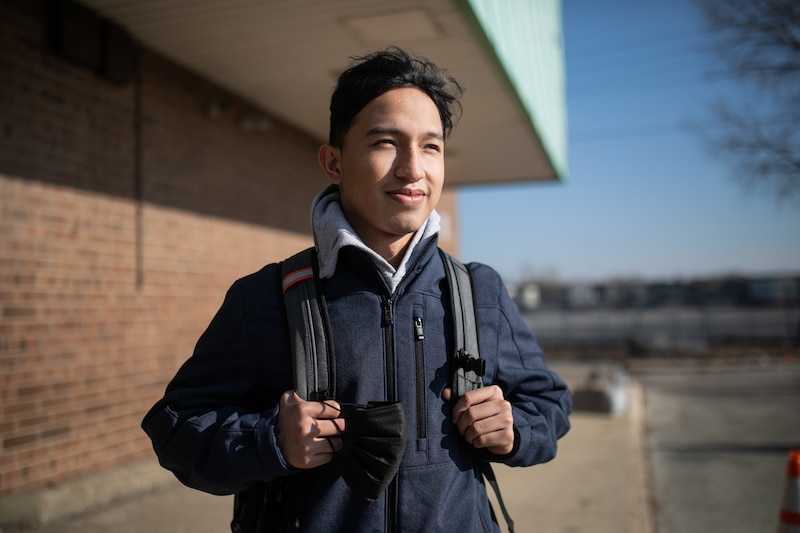
Last year was a total loss academically and, with the deep sense of isolation it brought, a strain emotionally as well. When Panduro, 17, tried to start over at his neighborhood Gage Park High School, he was told he was just too short on credits.
Staff there suggested he try Ombudsman’s South campus, which had lost a quarter of its student body during the pandemic.
“Ombudsman took me with open arms,” he said.
Janice Jackson, the district’s former CEO, said in an interview with Chalkbeat after her tenure ended this summer that she came to see bringing alternative school students such as Panduro more into the district fold as a key imperative. For example, even as the district pushed to instill more of a college-going culture in traditional schools, alternative students interested in continuing their education past high school did not get the same support.
“We can’t just have them in these programs to get a high school degree and improve our graduation rates, which we did without a next step,” Jackson said.
The district did not make a current leader available to discuss the changes, providing a written statement instead; Pedro Martinez, who replaced Jackson as CEO this fall, has not addressed the issue publicly.
“Every school district has a group of forgotten students, and in Chicago Public Schools, options students are it.”
In the year before the pandemic hit, the district teamed up with Education Lab on a new Chicago Student Success Initiative, underwritten with about $5 million from an AbbVie Foundation grant. The goals: better understand the district’s alternative school students and their experiences, and look for innovative ways to boost outcomes.
Those campuses were last in the spotlight roughly a decade ago, when the district kicked off a major expansion. The number of programs swelled from nine to 48 at their peak, including some run by for-profit providers such as Ombudsman, which has four schools in the city. At one time, as many as 13% of the district’s high school students attended an alternative classroom at some point in the year, compared with roughly 3% on average nationally.
The expansion helped fuel the rise in the city’s graduation rate, by opening up more seats for dropouts to take another crack at finishing school. It also drew criticism from community leaders who worried students were shunted into a second-tier system that would not prepare them for life after high school. Going by the district’s own alternative school ratings, some programs have delivered much better academic outcomes for students than others.
But in large part, the district left the alternative providers to their own devices. The relationship was marked by lack of coordination and distrust, said Dar’tavous Dorsey, associate director of strategic engagement at Education Lab.
“Every school district has a group of forgotten students, and in Chicago Public Schools, options students are it,” Dorsey said.
This spring, Education Lab released a report by senior research director Monica Bhatt showing students who enroll in alternative schools are much more likely than their peers to be low-income, to have been arrested or victimized, or to have experienced homelessness.
The report does not weigh in on the quality of Chicago’s alternative programs, noting it can be hard to tease out from their students’ high academic and mental health needs. But it says that while 90% of students on traditional campuses graduate, only 40% of teens in alternative schools do. And the overwhelming majority of students who attend will never return to a traditional high school, making alternative schools an essential “last line of defense” before they drop out.
The key takeaway was that because alternative school students face such a wide array of hurdles to graduation, their campuses must do more to offer personalized interventions.
During the pandemic, the district piloted a menu of interventions in six alternative schools and three neighborhood high schools: high-dosage math tutoring; a literacy program called Wilson for students with dyslexia and other struggling readers; new “postsecondary champions” to help students make a plan for after graduation; and cognitive behavioral therapy.
But the district also set about quietly overhauling the process of referring students to alternative programs.
A push to limit transfers
During the 2018-2019 school year, about a dozen district high schools — largely shrinking campuses on the South and Southwest sides — saw a fifth of their student populations or more transfer to alternative schools, according to data obtained by Chalkbeat. At Tilden, Austin, and Marshall high schools — campuses that serve almost entirely low-income student bodies — almost 30% of students made their way to alternative campuses that year. At Manley, more than 40% did.
But those numbers have since plummeted. Districtwide, the number of alternative transfers went from 3,820 in 2018 to about 1,200 last year. At Tilden, the transfers dropped to just more than 4% of the student body. At Bowen High School, they went from almost a quarter of all students to about 3%.
Even so, the major decrease in transfers did not stabilize enrollment at these feeder schools, which at some dropped sharply during the pandemic.
Based on interviews with school leaders and experts, the pandemic and the shift to remote learning contributed to the transfer declines. During virtual school, students had fewer conflicts with peers or staff when compared to in-person schooling and were more likely to stay put rather than seek out a new campus, for instance.
But district-run schools were also expected to rein in departures for alternative campuses. This fall, the district codified this expectation in a presentation for school leaders marked “confidential” and obtained by Chalkbeat. In it, a district student support official argues CPS would stand a better chance of reengaging students who disconnected from learning during the pandemic if they stay at traditional schools rather than switching schools.
The presentation outlines a more labor-intensive transfer request process. Now, one of five newly hired transition specialists reviews each request and could kick some back to schools, directing them to come up with a “support and intervention plan” to keep the student.
Jackson says these changes are overdue.
“There were simple fixes,” she said, “like putting extra steps in the system, proving that this is a choice that the student and the family are making, and not the school is making for the kid, and the kid feels like they don’t have any power.”
High school principals privately said the policy is well-intentioned and can stem some inappropriate referrals, such as for students with disabilities who did not receive adequate services on traditional campuses. But they said their campuses need more support to keep struggling students in house.
One principal said the ability to offer more flexible class schedules — including the half-day schedules that draw students who juggle school with jobs or parenting to some alternative campuses — would make a major difference. Federal COVID relief funds to target interventions to students who fell behind last year are helping, but school leaders worry that once the dollars run out, only the added layer of bureaucracy will remain.
“I now have to justify the transfer to someone who does not know the students or their background,” one South Side principal said.
Some alternative school leaders also voice measured support for the shift.
“We see the trauma students experience when their schools push them out.”
At Instituto Justice & Leadership Academy, a Pilsen charter alternative school, principal Jennifer Ventimiglia said she appreciates efforts to keep more students in traditional settings. Her school bucked the pandemic-era trend, growing its enrollment through neighborhood word-of-mouth and, occasionally, parole officer referrals.
Ventimiglia wonders if some traditional schools held on to more students in part because the district put rating its campuses on hold, taking away an incentive to push out students who might drag down a school’s attendance, and graduation rates. In any case, it was the right thing to do.
“We see the trauma students experience when their schools push them out,” she said.
But some in the alternative school world are more skeptical. Jack Wuest of the nonprofit advocacy group Alternative Schools Network, says he worries the move will sink smaller nonprofit campuses while for-profit providers stay afloat. He said the pandemic is a precarious time to shift gears on transfers after years of unchecked growth.
Sheila Venson, executive director at Youth Connection Charter School, a network of charter alternative schools, notes that the average age of students in the network is 18, leaving little room for error to complete graduation requirements before they age out.
Alternative school leaders stress that the pandemic also hit options students hard: Many took on full-time jobs that can be hard to balance with school. Some have gotten arrested, became displaced from their homes, or had babies.
But Venson says the district also is trying to buttress South and West Side feeder schools desperate to hold on to students after years of enrollment losses.
“CPS has already failed these kids,” Venson said. “I am extremely skeptical of this move at a time when the city has lost enrollment.”
She added: “I don’t know if our schools will survive.”
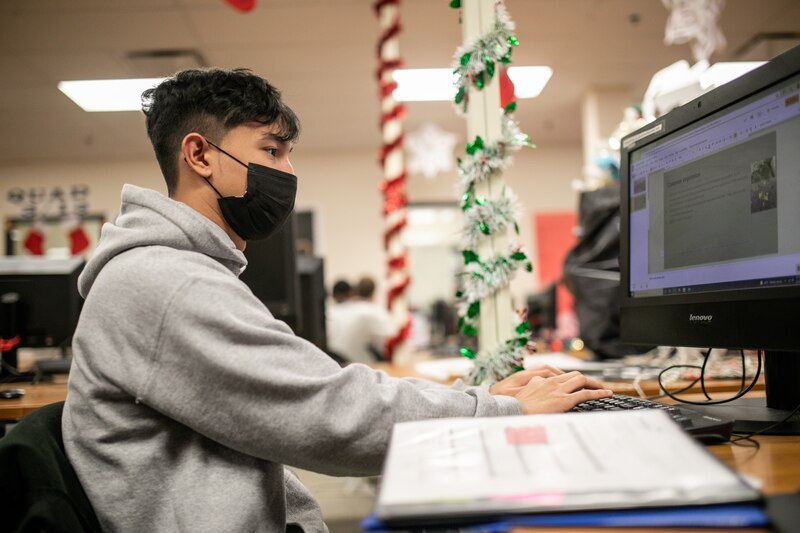
‘Nothing has changed’
On a recent morning, Panduro Googled images of hardy plants for a PowerPoint presentation on the arctic tundra in a sprawling computer lab at Ombudsman, decorated with tinsel and paper snowflakes.
On Thursdays, he and other students spend the bulk of their 7:30 to 11:30 a.m. school day working independently at computers, with several instructors pacing the room and offering suggestions. On the walls, colorful posters tracked the number of credits students had made up and displayed student work, under the heading, “You too shall pass.”
In the lab, Panduro had met Duane Terry, a junior.
Unlike Panduro, Terry had experienced academic upheaval even before the pandemic, leaving his neighborhood high school in Englewood for a charter school. Remote learning derailed his studies completely.
“I wasn’t patient enough to sit all day and do the work,” Terry said.
Both Panduro and Terry have made fast headway.
“If you fall behind at a traditional school, they are not stopping for you,” Panduro said. “Here, they stop for you.”
A couple of months into the semester, the school invited Panduro to try out for one of 20 spots in a new internship program that would place students in jobs working in City Council offices, banks and other resume-boosting settings. Staff at Ombudsman ran mock interviews with him to prepare for his interview at his alderperson’s office.
The internship was one of the new programs launched through Education Lab’s Student Success Initiative.
At YCCS-West, one of the two campuses in that network that served as pilot sites, principal Early King credits a postsecondary coach with boosting its graduation rate. Meanwhile, teens who participated in intensive math tutoring improved their grades.
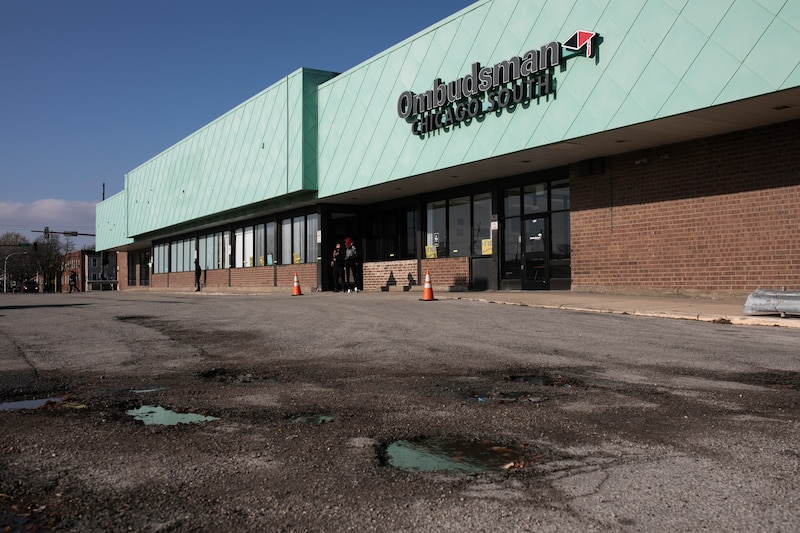
But when it comes to the relationship with the district, Ombudsman regional administrator Audry Peden-Blinstrup says, “Nothing has changed — absolutely nothing. We’re not working together.”
The district says alternative school students were also included in a new summer jobs program, a summer transition program for recent graduates and the district’s Moving Forward Together plan to address the pandemic’s academic and mental health fallout.
At Ombudsman, Terry says his goal is to get caught up by the end of this semester and transfer back to a traditional high school. He misses having “a real high school experience,” from playing on the basketball team to attending school assemblies.
Panduro says he has no plans to leave. He never landed an internship but recently made Ombudsman’s honor roll, his achievement noted on a “Star Wars”-themed board in the computer lab. The school threw a party for the students who made the roll, with fried chicken and speeches by a few classmates.
“We’re making it,” he thought as he listened. “We are getting back on our feet.”

